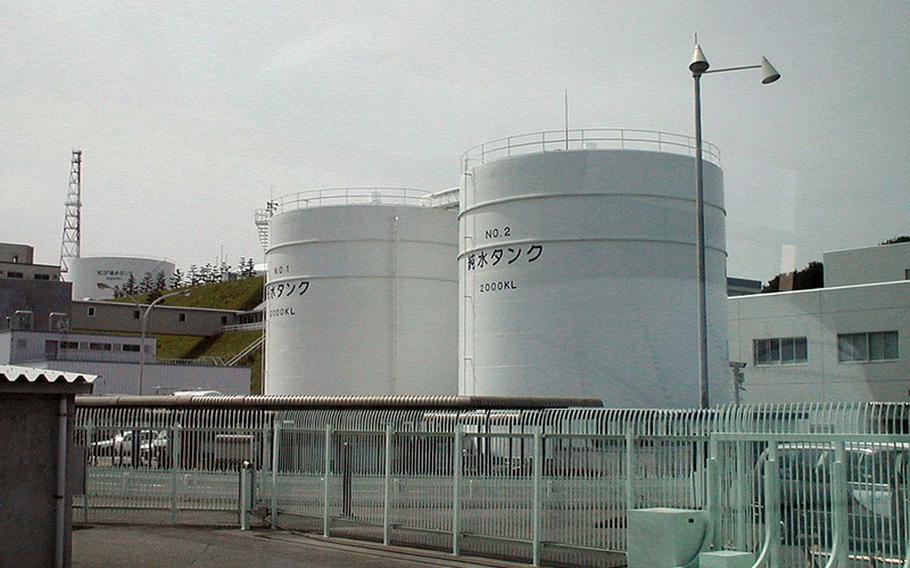
The March 2011 disaster at the Fukushima Dai-ichi nuclear power plant soured the Japanese public on nuclear power. (Creative Commons user kawamoto takuo)
TOKYO — Japan’s plan for its politically unpopular nuclear power industry — a position expected to be released within days — will likely have far-reaching impacts on energy consumers, including the U.S. military and its personnel.
With a parliamentary election expected to be called in the next few months, the ruling Democratic Party of Japan has been mulling plans ranging from reducing the amount of nuclear power Japan relies upon to eliminating it altogether. The latter option is receiving the most support in opinion polls, but the resulting energy deficit could cripple a country with more debt as a percentage of its domestic product than any other advanced economy, according to the International Monetary Fund.
At a government energy and environment committee meeting Tuesday, officials said Japan would need to spend 50 trillion yen ($634 billion) on renewable energy technology if it wanted to abandon nuclear power by 2030. Meanwhile, average household utility costs would rise to 32,443 yen ($411 at current rates) per month — about double the 2010 figure.
The massive cost projections have led many business leaders to embrace another option: restore power to most or all of Japan’s nuclear plants and shut them down as they reach their 40-year retirement dates.
That would leave Japan to rely on 15 percent of its power from nuclear sources by 2030, half of what it used prior to the 2011 Fukushima Dai-ichi power plant disaster that was caused by an earthquake-spawned tsunami. A third option that would cap Japan’s atomic energy share at 25 percent has also been considered.
Currently, only two of Japan’s 50 reactors are in operation.
Prime Minister Yoshihiko Noda has voiced support for restarting the shuttered reactors despite months of anti-nuclear protests galvanized by the Fukushima Dai-ichi partial meltdown last year.
Takumi Fujinami, senior researcher at the Japan Research Institute think tank, said the DPJ has already concluded that a total shutdown would risk too much economic turmoil. The “15 percent option” would allow the elimination of nuclear power by 2050 if still desired by future governments.
“I think it’s a reasonable plan,” said Fujinami, who added the government was overestimating consumer costs in the absence of nuclear power.
Many DPJ lawmakers agree the 15 percent plan is reasonable, but backing it is politically risky with the election looming.
“Those [parliamentary candidates] who promise to abandon nuclear power generation will take charge after the election,” longtime independent political commentator Minoru Morita told Stars and Stripes.
Regardless of which nuclear plan wins out, the U.S. military and some of its personnel are going to be paying more for energy in the near future.
The government is now allowing Tokyo Electric Power Co. — owner of the destroyed Fukushima Dai-ichi plant — to begin hiking residential power prices by an average of 8.47 percent.
Thousands of U.S. military personnel live off-base in Japan.
Servicemembers and many civilians hired stateside receive a utilities stipend — which increases with higher ranks and pay grades — but may not cover all expenses. The government-funded stipend is developed based on cost surveys and exchange rate data.
But U.S. citizens hired by the military within Japan, including former servicemembers who do not return to the U.S. before taking a civilian job, generally pay for household energy out of pocket.
Until a final plan is hammered out, Japan could continue the trend of asking the U.S. to pay for more of the energy it uses to power bases when the current Special Measures Act expires in October 2015.
Japan currently pays for 72 percent of energy costs up to 24.9 billion yen ($316 million) over five years, a figure reached prior to the shutdown of Japan’s reactors last year. Japan has progressively paid less for utilities and other U.S. base expenses since 1999.
U.S. military commands in mainland Japan gave little indication that the specter of a new Japanese energy plan was changing their planning.
Commander Naval Forces Japan officials told Stars and Stripes their energy strategy isn’t changing for now, but that they have aggressively looked for energy savings since the aftermath of the 2011 earthquake and tsunami.
The Army in Japan has set reduction goals in its use of oil, water and other energy sources at between 2 percent and 3 percent annually, though Army officials did not specify Friday how many years the policy would last. The Air Force says it has introduced conservation measures at Misawa Air Base and other locations that have saved millions of dollars in recent years.
Marine Corps Station Iwakuni officials did not respond to requests for comment. The bulk of Marines in Japan are stationed on Okinawa, where there are no nuclear power plants. Okinawa’s energy provider hasn’t announced a rate hike for off-base consumers.
Stars and Stripes reporter Hana Kusumoto contributed to this report.